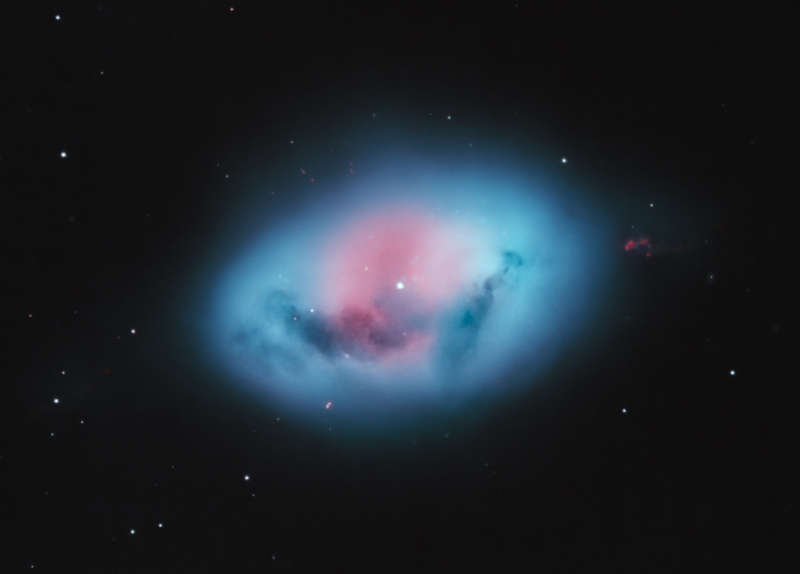Credit & Copyright: Dong Liang
Explanation:
This pretty nebula
lies some 1,500 light-years away,
its shape and color in this telescopic view
reminiscent of a robin's egg.
The cosmic cloud spans about 3 light-years, nestled securely within the
boundaries of the southern constellation Fornax.
Recognized
as a planetary nebula, egg-shaped NGC 1360 doesn't represent a beginning
though.
Instead it corresponds to a brief and final phase in the
evolution of an aging
star.
In fact,
visible at the center of the nebula, the central star of NGC 1360
is known to be a binary star system likely consisting of two evolved
white dwarf
stars,
less massive but much hotter than the Sun.
Their intense and otherwise invisible ultraviolet radiation has
stripped away electrons from the atoms in their mutually
surrounding gaseous shroud.
The predominant blue-green hue of NGC 1360 seen here is the
strong emission produced as electrons recombine with
doubly ionized oxygen atoms.
1999 2000 2001 2002 2003 2004 2005 2006 2007 2008 2009 2010 2011 2012 2013 2014 2015 2016 2017 2018 2019 2020 2021 2022 2023 2024 2025 |
Yanvar' Fevral' Mart Aprel' Mai Iyun' Iyul' Avgust Sentyabr' Oktyabr' Noyabr' Dekabr' |
NASA Web Site Statements, Warnings, and Disclaimers
NASA Official: Jay Norris. Specific rights apply.
A service of: LHEA at NASA / GSFC
& Michigan Tech. U.
|
Publikacii s klyuchevymi slovami:
planetary nebula - Planetarnaya tumannost'
Publikacii so slovami: planetary nebula - Planetarnaya tumannost' | |
Sm. takzhe:
Vse publikacii na tu zhe temu >> | |
